Area and perimeter of triangles
Categories: gcse geometry
Level:

A triangle is a three-sided polygon. In this article, we will look at how to calculate the area and perimeter of a triangle.
We will start with the basic formulas and then look at how they can be extended in cases where you might not have the exact information you need about the triangle. We will also look at special cases of obtuse triangles, equilateral triangles, and isosceles triangles.
Here is a video covering the topic:
Simple area formula
The simplest equation for the area of a triangle is:
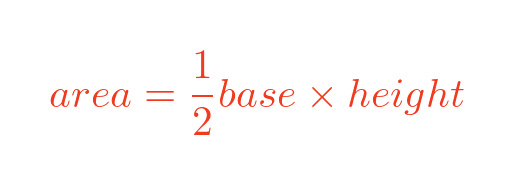
Here is a diagram that illustrates this:
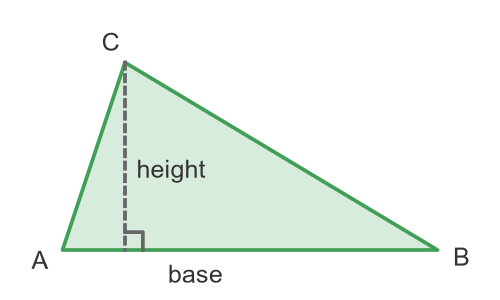
Here, the base is the length of the horizontal side of the triangle, AB.
The height is the distance from the base to the highest point C. This is the length of a line from point C that meets AB at a right angle.
This formula assumes that we know the base and height. If those values are not given, they can be calculated from other angles and sides of the triangle that are known.
Simple perimeter formula
We can calculate the perimeter of a triangle if we know the length of its 3 sides, a, b and c:
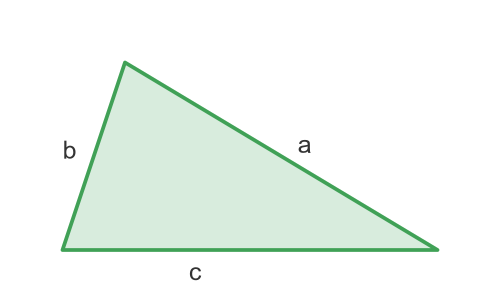
The perimeter is simply the sum of the lengths of the sides:

This formula assumes that we know the lengths of the three sides. Again, if those values are not given, they can be calculated from other angles and sides of the triangle that are known.
Understanding the area formula
Why does the area formula work? The easiest way to understand it is to first look at a right-angled triangle:
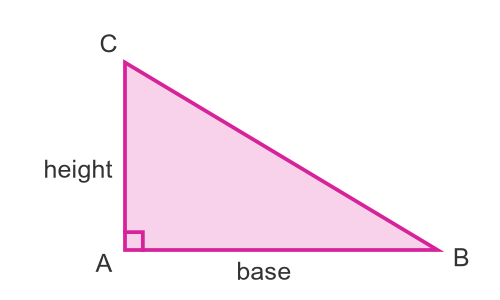
In a right-angled triangle, the length AB is the base and AC is the height.
We can draw an identical triangle above the original like this:
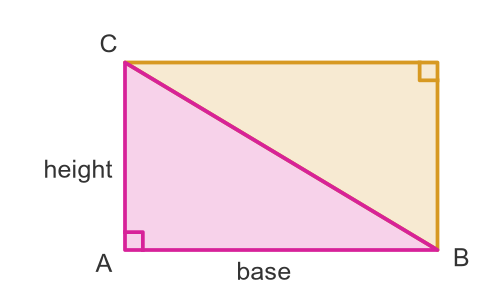
These two triangles form a rectangle, with the line AC as a diagonal.
The area of the rectangle is the base multiplied by the height. Since the rectangle contains 2 triangles, the area of each triangle is half of that, which gives us the formula from earlier:

That is fine for a right-angled triangle, but what about other triangles? We can do a similar trick of drawing a copy of the triangle above the original:
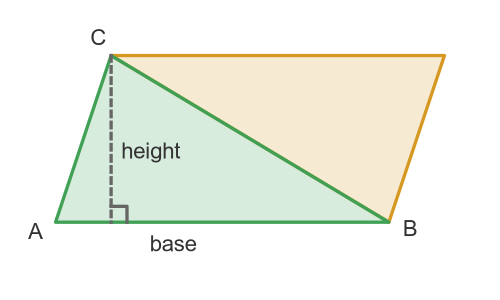
The two triangles now form a parallelogram.
The area of a parallelogram is equal to the base times the height, just like a rectangle. But remember, of course, that the height is not the same as the length AC. We must use the vertical height, just like we do when finding the area of a triangle.
Since there are two triangles in the parallelogram, this gives us the same formula as before for the area of a triangle: half base times height.
Area of parallelogram
In case you are not familiar with the area of a parallelogram formula, here is a quick diagram to recap:

A parallelogram can be transformed into a rectangle by cutting off a triangular portion on the left and shifting it to the right. The resulting rectangle has dimensions base by height.
Area of a triangle given two sides and an angle
What if we don't know the triangle height? For example, we might only know two sides and the enclosed angle (side-angle-side or SAS), like this:
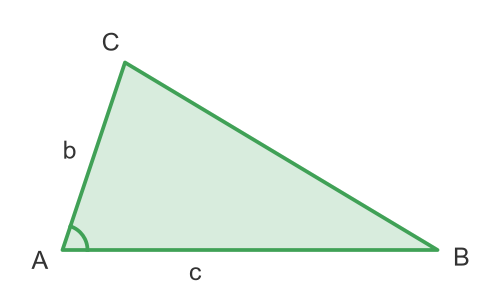
We are given the lengths of the sides a and b, and the enclosed angle A. We will take AB (length a) as the base. But we still need to know the height of the triangle. Here is how we can find it:
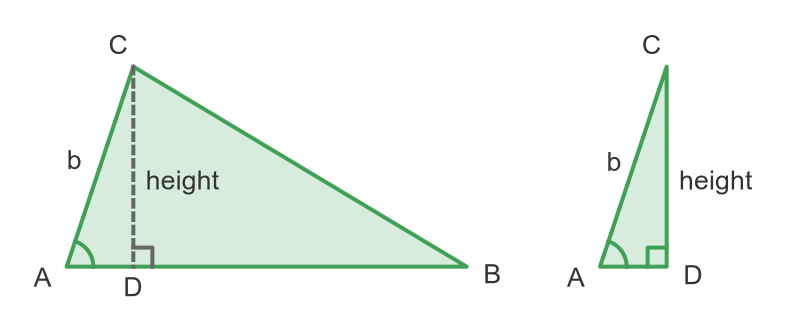
We draw a line through point C, at a right angle to the base AB, and say it meets the base at point D. This gives us a triangle ACD that we need to solve to find the height.
In the triangle, AC is the hypotenuse, we know angle A, and we want to find the side CD. This side is opposite the angle A, so we can use the sine function to find its length:

We can rearrange this to find the height:

So now we know the base (which is just c) and the height, we can calculate the area from the original formula:

Area of a triangle given 3 sides
If you are given the 3 sides of a triangle, there is a formula known as Heron's formula to calculate the area directly. Given a, b and c:

We first calculate a value s, which is equal to half the perimeter:
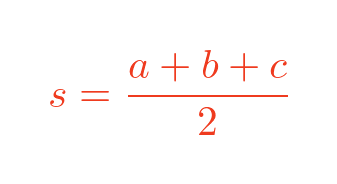
The area of the triangle is:

Other situations
In general, you can find the area and perimeter by solving the triangle. This means using the information you have about the triangle to find any unknown sides or angles you require. The sine rule, the cosine rule, and Pythagoras' theorem are useful ways to solve a triangle.
Equilateral triangles
For an equilateral triangle, we know that all sides are equal, and every angle is 60 degrees.
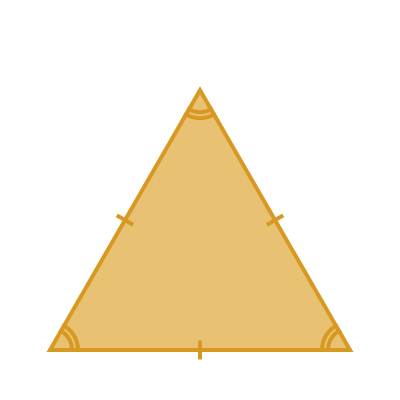
The perimeter of a triangle is the sum of the lengths of all its sides. For an equilateral triangle of side a the perimeter is:
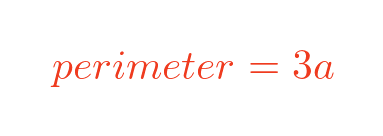
The area we can use the formula from earlier:

But this time, both sides (b and c) are equal to a, and the angle is 60 degrees. The formula can be simplified to:
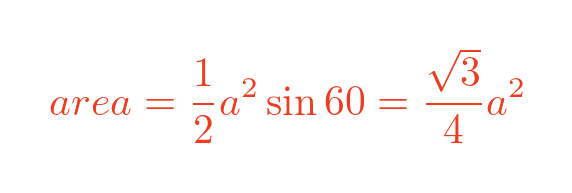
This relies on the fact the sine of 60 degrees is half the square root of 3.
Isosceles triangles
For an isosceles triangle, we know the two sides are equal.

If the base has length b and the two legs have length l, the perimeter is:

There is no special formula for the area of an isosceles triangle.
Related articles

Popular tags
adder adjacency matrix alu and gate angle answers area argand diagram binary maths cardioid cartesian equation chain rule chord circle cofactor combinations complex modulus complex numbers complex polygon complex power complex root cosh cosine cosine rule countable cpu cube decagon demorgans law derivative determinant diagonal directrix dodecagon e eigenvalue eigenvector ellipse equilateral triangle erf function euclid euler eulers formula eulers identity exercises exponent exponential exterior angle first principles flip-flop focus gabriels horn galileo gamma function gaussian distribution gradient graph hendecagon heptagon heron hexagon hilbert horizontal hyperbola hyperbolic function hyperbolic functions infinity integration integration by parts integration by substitution interior angle inverse function inverse hyperbolic function inverse matrix irrational irrational number irregular polygon isomorphic graph isosceles trapezium isosceles triangle kite koch curve l system lhopitals rule limit line integral locus logarithm maclaurin series major axis matrix matrix algebra mean minor axis n choose r nand gate net newton raphson method nonagon nor gate normal normal distribution not gate octagon or gate parabola parallelogram parametric equation pentagon perimeter permutation matrix permutations pi pi function polar coordinates polynomial power probability probability distribution product rule proof pythagoras proof quadrilateral questions quotient rule radians radius rectangle regular polygon rhombus root sech segment set set-reset flip-flop simpsons rule sine sine rule sinh slope sloping lines solving equations solving triangles square square root squeeze theorem standard curves standard deviation star polygon statistics straight line graphs surface of revolution symmetry tangent tanh transformation transformations translation trapezium triangle turtle graphics uncountable variance vertical volume volume of revolution xnor gate xor gate